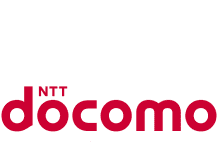
Spotlight on Future Networks | TelecomDrive.com
A number of operators have started implementing 5G networks. They are however increasingly realizing that the data management needs of 5G are drastically different than those of earlier network generations.
5G demands that operators move from bare metal to cloud-based stateless applications, where more efficient managing and processing of data is needed to manage and process larger data volumes, also ensuring that authorized applications have rapid access without downtime.
The solution is Cloud Data Management (CDM) in which each 5G Network Function (NF) is treated as a service. CDM provides a data layer that stores information that NF’s need, including fast-changing session/state data, subscriptions, policy and configuration data.
CDM replicates data as required, easing the creation of 5G slices and stateless core services, while also delivering data at the edge for performance-sensitive, ultra-reliable low latency applications. The data replication is also key to providing six-nines of service availability on virtual infrastructure that typically provides three-nines of availability at infrastructure level.
IT provides a glimpse of CDM’s 5G benefits
A recent survey of 116 business and technical managers responsible for modernizing data environments, illustrates the importance of CDM to the IT networks:
A wide range of business functions are supported by CDM the most important of which include analytics (64%), data warehousing (52%) and reporting (47%)
The top CDM benefits are seen as scalability for data storage and integration workloads (51%), automatic and elastic resource management (44%) and affordably enabling advanced analytics at scale (35%)
More than 85 percent of respondents say implementing CDM is either extremely important (39%) or moderately important (47%) to the success of their data strategy
The “must have” features of CDM include core data management functions for data integration (70%), data prep (57%) and data quality (55%)
While the report is focused on IT infrastructure, it mirrors the benefits CDM can deliver for 5G core networks and provides a critical advantage for operators. CDM provides the key infrastructure components needed to enable new 5G core Service Based Architecture (SBA).
The 5G core difference
The 5G core is composed into service-based architecture (SBA) elements. They are designed to separate the control plane (CP) and user plane (UP) and relies on an external Data Layer to make the control plane and user plane stateless. The 5G core is made up of virtualized, software-based NFs (or services), creating a new architecture that gives operators the flexibility to meet diverse network requirements for 5G use cases.
Because 5G core architecture is cloud native, it’s important for a 5G CDM offering to integrate cloud-ready capabilities for the 5G mobile core. These include:
Unified Data Management (UDM): Supports the generation of authentication and key agreement (AKA) credentials; user identification handling; access authorization; subscription management
User Data Repository (UDR): Stores information about subscribers, application-specific data and policy data
Authentication Server Function (ASF or AUSF): Implements the extensible authentication protocol (EAP) authentication server and stores keys
Policy Control Function (PCF): Provides policy rules for control plane functions, including network slicing, roaming and mobility management. It accesses subscription information for policy decisions taken by the UDR and supports the new 5G quality of service (QoS) and charging functions
Other 5G network functions like NRF, NEF, CHF, AMF and SMF benefit from the UDSF portion of CDM which enables these stateless network functions to store the fast changing session data.









